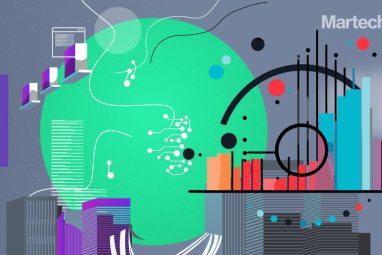Build or Buy Your B2B Customer Data Platform?
Are you looking to reduce your total cost of ownership and accelerate time-to-market? Don’t build a customer data platform (CDP) from scratch for data management and integration — buy one and build an innovative solution that drives competitive differentiation. “Organisations investing too much in building or customising systems of record have less funding available for […]
Topics
Are you looking to reduce your total cost of ownership and accelerate time-to-market? Don’t build a customer data platform (CDP) from scratch for data management and integration — buy one and build an innovative solution that drives competitive differentiation.
“Organisations investing too much in building or customising systems of record have less funding available for differentiating applications.”
This statement from Gartner has proven all too correct for many businesses struggling to create their own customised B2B data collection and distribution systems from scratch. While you might understandably wish for a bespoke solution to meet your exact specifications, there’s a much smarter way to get there — by buying a powerful, out-of-the-box platform that is also open for customisation. Then use the money you’ve saved on the total cost of ownership (TCO) and time-to-market efficiency to build differentiating applications as needed.
Also Read: CDP Delivers Personalised Customer Experiences at Scale
Buy CDP to Standardise, Build to Compete
Creating systems of record that integrate data flawlessly and connect readily to outside applications is no small feat. This is especially true in the B2B space. Any organisation hoping to build a B2B data management system from the ground up must cope with time-consuming, laborious issues:
● B2B Data Architecture: You can’t onboard and manage your B2B data until you’ve created a reliable, well-tuned infrastructure to handle business records, hierarchies, locations, contacts, departments, intent data, behavioural data, and countless other details. Creating a reliable architecture that can actually do all these things requires years of dedicated work from expert data scientists and engineers. That’s talent and brainpower you could (and should) be devoting to more specialised applications.

● Aggregated 3rd-Party Data: External data allows for data enrichment, net-new data sourcing for prospecting and reaching out to new audiences, and more advanced analytics such as total addressable market analysis, territory planning, and risk assessment. But aggregating a robust 3rd-party data ecosystem internally is very costly and impractical, especially when you consider the issues of maintaining that ever-evolving data.
Also Read: The Simplest Ways to Think About Choosing Your MarTech Stack
● Pre-Built Integrations and APIs: Designing and developing the “pipes” to connect and integrate your various customer and prospect data systems is a major investment. Why re-invent APIs when many vendors offer ready-made, flexible, open, well-documented APIs and native integrations built specifically to onboard, register, and catalogue B2B data sources? Don’t forget the additional need to integrate your data with other key go-to-market systems such as ad platforms for activation of your data. You’re better off purchasing a pre-built solution and then focusing on putting that data to work for your business operations, and marketing and sales channels.
The ROI of Buying a CDP
Buying an established, pre-built B2B data management platform frees up your engineering resources to focus on your core product and equips go-to-market teams with the integrated tools and data they need to drive meaningful customer experiences. By leveraging a CDP’s economies of scale and expertise in B2B data integration, management, and sourcing, you can create your customisations on a trusted, continually improving platform that is built on best-of-breed tech. The benefits of the platform, along with access to expert teams and communities of peers, can yield dramatic returns as opposed to building:
● Reduce Total Cost of Ownership (TCO): Access existing data, tools, and integrations as your foundation. The solutions on the market may be best-in-class for your needs, or good enough when looking at the cost to build exactly what you want. Your costs can be 3-5x if you choose to hire internal teams, commission technology-enabled service providers to build a custom solution or buy the entire big data tech stack. Case in point: Comcast Business reduced their TCO by 75 per cent, meaning the solution they were building and maintaining was four times as expensive!
● Accelerate Time-to-Market: While the goal is to eliminate data silos, a risk for new centralised data sources is that they often end up creating a new, sometimes larger silo. For instance, the promise of Data Lakes for marketers was that their teams could do granular segmentation and analysis on audiences from this wealth of data. The problem was data requests required IT, were not fulfilled for weeks, and the data then had to be re-prepped for activation since the data lakes were not connected to sales and marketing channels. Customer Data Platforms enable both IT and revenue teams and connect to the systems critical to reach more buyers.
Also Read: MarTech Acquisitions Are On the Rise. What Next?
● Extensibility & Innovation: Achieve data unification and data stewardship across your existing systems with a Customer Data Platform, and benefit from their innovation and yours. These platforms are well-funded, growing businesses that are constantly releasing new capabilities that you will benefit from. If you’re an enterprise, look for open, flexible options that will allow you to customise and scale to your needs. Beyond the core capabilities of the Customer Data Platforms, other bleeding-edge technologies required holistic, accurate data like BI and analytics, customer experience engines, AI-driven applications. CDPs with robust APIs can make trusted, unified data accessible to these powerful systems.
Forrester’s Steven Casey predicts of the companies investing in data unification, 75 per cent will choose a CDP over Data Lakes and custom build solutions. Packaged Customer Data Platforms and other data management solutions open the door to more than new code, apps, API, documentation and integration. Increase your business agility, experience the ease of maintenance, and access expert teams. You’ll be glad you bought these proven, expertly-crafted, fully-integrated solutions instead of trying to build them yourself!






